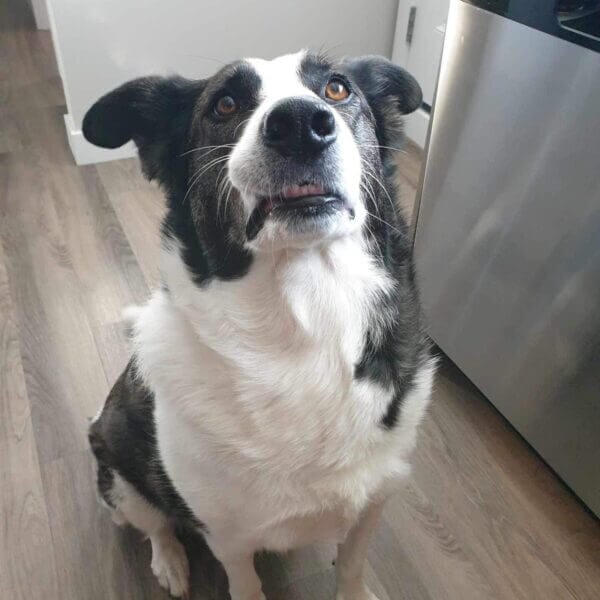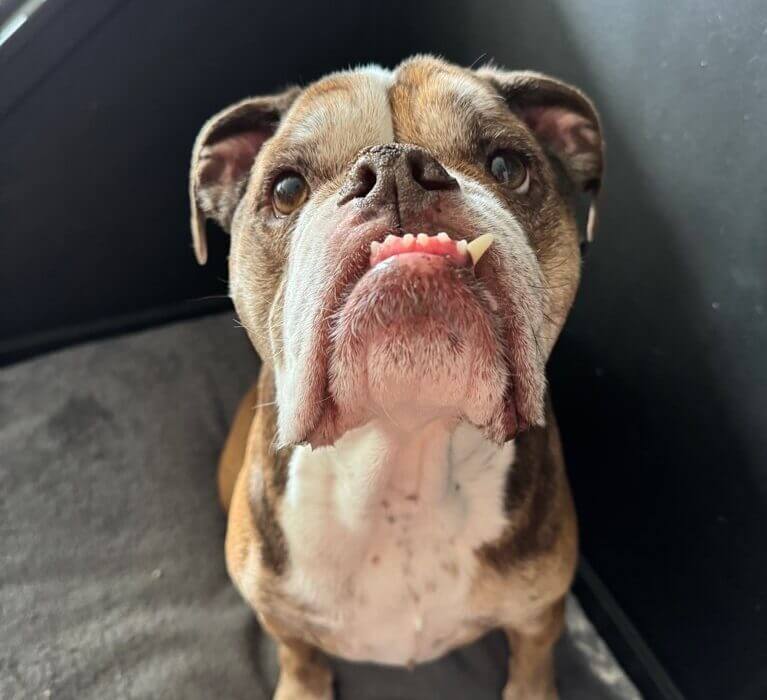
What is Resource Guarding?
Resource guarding or “possession aggression” is a common but often misunderstood behaviour in dogs. It manifests as a dog aggressively defending items they consider valuable. A dog may hover over the item, growl, snap, and even lunge and bite when anyone approaches something they consider valuable. The “resource” can vary widely from dog to dog and might include food, toys, a resting spot or bed, or even a person.
While this behaviour can be alarming for pet owners, it’s essential to recognize that it’s rooted in natural instincts. If left unchecked, it can become quite dangerous as the dog will go to drastic lengths to protect its desired item. It is very common for people to often overlook this behaviour in small breed dogs, or when dogs are eating and protecting their food. Understanding the causes of resource guarding, how to manage it, and steps for prevention can help ensure a harmonious relationship between you and your dog.
Causes of Resource Guarding
1. Instinctual Behaviour
In the wild, animals must protect their resources to survive. While domesticated dogs no longer face the same threats, the instinct to guard valuable items can remain.
2. Lack of Socialization
Dogs that haven’t been properly socialized, especially during their formative weeks (3 to 14 weeks old), may be more prone to resource guarding. They may not have learned that they don’t need to guard resources because there’s always plenty to go around.
3. Past Experiences
A dog that has experienced scarcity, such as a rescue dog that had to compete for food or toys, may develop guarding behaviours as a way to ensure they don’t lose access to what they need.
4. Starving
Puppies not being provided enough food or a dog that was rescued and severely malnourished may do this as they are simply hungry.



Signs of Resource Guarding
Recognizing the signs of resource guarding early on can prevent escalation:
- Growling or raising lips & baring teeth when approached, while eating or near a valued item.
- Snapping or biting if someone tries to take away the guarded resource.
- Stiff body posture, or freezing and intense staring. Ears may be flattened against the head.
- Guarding to block the item from view or standing directly over top of valued item.
- Quickly consuming food or hoarding items when others are nearby.

Managing Resource Guarding Behaviour
If your dog displays resource guarding behaviour, it’s important to manage the situation carefully, and with patience to prevent harm and reduce stress. You do not want to push them past their comfort level, effectively making the problem worse.
1. Avoid Punishment: Never punish a dog for resource guarding. This can increase their anxiety and reinforce the behaviour. Instead, focus on positive reinforcement and gradual behaviour modification.
2. Trade Up to Get the Item Back: Teach your dog that giving up a resource can lead to something better. They will not want to leave the desired item unless you entice them with something they want more. For example, offer a high-value treat in exchange for an item they’re guarding. Make sure you toss a trail of treats further and further away from the desired item, and have ample time to remove it safely while they are busy. If you attempt to grab it and they are faster, your dog will most likely not fall for this maneuver again. Over time, this can help reduce their anxiety about losing the item.
3. Alternative Jobs to Get the Item Back: If they are not responding to the treat trail – you can grab their leash to “go for a walk” , or pretend it’s dinner time and place out their food out (or some desired human food), or give lavish attention to other pets in your home. Dogs will respond differently in what they place at a higher value then the item they are guarding.
4. Desensitization and Counter-Conditioning: Gradually get your dog used to people being near their guarded resource without posing a threat. Start by standing at a distance and tossing treats, slowly moving closer over time as they become more comfortable.
5. Do not chase them! This will get you into a battle of wills and exacerbate the issue. Encourage them to come to you, to “sit” , or trade for the item.
6. Do you really need that item right now? If this is something that is not harmful to your dog (in the moment), or valuable and they will not trade it for a treat then leave it until they have walked away and hide that item and do not ever give it back to them.
7. Professional Help: If your dog’s resource guarding is severe, working with a professional dog trainer or a veterinary behaviourist is recommended. They can develop a tailored behaviour modification plan and ensure everyone’s safety.

Preventing Resource Guarding in Puppies
Preventing resource guarding from developing is easier than managing it after it has already started. Here are some steps you can take with puppies to catch the signs early:
- Handle Often: Get your puppy used to being handled while they play. Gently pet them and occasionally pick up their toy, then return it right away. This helps them learn that your presence isn’t a threat.
- Let them Eat! Once you place food down – leave it and let them eat. You can slowly place bits of food into their bowl, making sure they see your hand placing it there. Your hand providing food is a positive association. Once food is in the bowl, leave them to eat it without interrupting. It is not ideal to stick your hands in the bowl while eating or pet them as this can be annoying to the dog and create problems down the road.
- Positive Associations: Make sure your puppy associates people approaching their resources with positive outcomes. For example, if someone walking by while they’re eating, they might drop a tasty treat into the bowl.
- Teach Drop It and Leave It: Training your dog to drop or leave items on command can prevent guarding behaviour. Practice these commands regularly with positive reinforcement.
- Giving is the Opposite of Taking Away: Continuously give your puppy things, over and over and praise them when you do. Have them “go get items” and bring back to you and give to them. Constantly taking items away from a puppy could lead to resource guarding behaviour.
- Encourage Sharing & Build Confidence: Provide opportunities for your puppy to share toys or space with other dogs under supervision. This teaches them that they don’t need to guard resources to keep them. Expose them to new people, situations and other animals, and reward them when they do well!
- Provide Ample Resources: always make sure there are enough toys, treats, food and bedding to go around if you have multiple dogs in your home to avoid resource guarding behaviour.

Conclusion
Resource guarding is a natural behaviour, but it can become problematic and dangerous if not addressed properly. Understanding the causes and signs of resource guarding, along with implementing appropriate management and prevention strategies, can help you create a safe and positive environment for both you and your dog.
With patience and the right approach, most dogs can learn that they don’t need to guard their resources and can relax knowing they are in a secure and loving home.
Never hesitate to seek professional help from a dog trainer or behaviourist if you are not having success with the tips provided above.








